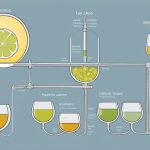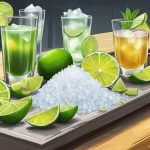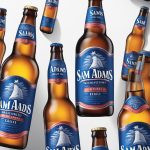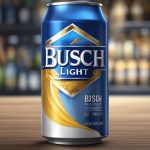Wine is a beverage enjoyed globally for its variety of flavors and its cultural significance in social and dining settings. As consumers become more health-conscious, there’s a growing interest in understanding what goes into the production of wine. A common inquiry is whether wine, like some other popular beverages such as coffee and soda, contains caffeine.

Caffeine is a natural stimulant most often associated with coffee and tea, noted for its energizing effects on the human body. Given that wine is typically consumed in the evening or with dinner, the presence of caffeine could be a concern for those sensitive to stimulants or looking to avoid them during certain hours.
Key Takeaways
- Wine is a popular beverage that is often scrutinized for its contents.
- Caffeine is a stimulant not found in traditional winemaking ingredients.
- Understanding the contents of wine can inform consumer choices and health considerations.
Table of Contents
Overview of Wine as a Beverage

Wine, a renowned alcoholic beverage, is crafted from the fermentation of grapes. It is recognized for its variety of flavors and the presence of alcohol.
Basic Composition of Wine
Wine’s fundamental components are simple yet key to its distinctive nature. At its core, grapes are the essential ingredient. These fruits are harvested and their juices are fermented, a process where yeast converts sugars in the grape juice into alcohol. This transformation not only creates the alcohol content that defines wine as an alcoholic beverage but also develops the bouquet of flavors that wine lovers appreciate. Notably, components such as tannins are introduced, primarily in red wine, lending to its complexity and texture.
Wine Varieties
The spectrum of wine is broad, encompassing chiefly red wine and white wine, among others. Red wines are distinguished by their rich, deep colors and bold flavors, commonly produced from grape varieties like Cabernet Sauvignon and Merlot. In contrast, white wines, such as Chardonnay and Sauvignon Blanc, offer a lighter, crisper tasting experience. The variety does not stop with color; within each category, wines may range from sweet to dry, influenced by the grape type, region grown, and winemaking techniques.
Caffeine and Its Properties

Caffeine is a natural stimulant most commonly found in coffee, tea, and many soft drinks. It works by stimulating the central nervous system, helping to increase alertness and ward off tiredness. Here’s a closer look at how caffeine compares with alcohol and its various sources.
Differences Between Caffeine and Alcohol
Caffeine and alcohol impact the body differently. Caffeine acts as a stimulant, which means it increases activity in the central nervous system and the brain. People consume caffeine to feel more awake and alert. In contrast, alcohol is a depressant, which slows down brain function and impairs reasoning, muscle coordination, and even conscious thought.
Sources of Caffeine
Caffeine is found naturally in several plants, including coffee beans and tea leaves. It’s also added to various products, such as energy drinks and soda. While coffee and tea can vary in their caffeine content, energy drinks often feature higher caffeine levels designed to provide a rapid boost of energy. Here’s a snapshot of caffeine sources:
- Coffee: A single 8 oz cup can contain between 80-100mg of caffeine.
- Tea: Contains about 15-70mg of caffeine per 8 oz cup.
- Soft Drinks: Can range from 20-40mg per 12 oz serving.
- Energy Drinks: Some contain over 250mg per serving.
These amounts can vary widely based on the brand and preparation method.
Winemaking Process

Winemaking is a detailed craft that transforms grapes into wine through the fermentation process. This procedure involves critical steps like the role of yeast, which is pivotal in dictating the final alcohol content and flavor of the wine.
Fermentation and its Effects
Fermentation is at the heart of the winemaking process. It begins once the harvested grapes are crushed and the juice is extracted. Yeast is then added to the juice, which starts consuming the natural sugars found in the fermented grapes. This action by the yeast converts the sugars into alcohol and carbon dioxide, resulting in the wine’s alcohol content. The duration and conditions of fermentation not only affect the alcohol level but also influence the final taste, aroma, and production quality of the wine.
Role of Yeast in Wine Production
Yeast plays a crucial role in wine production. While there are various yeast strains, one commonly used type by winemakers is Saccharomyces cerevisiae. This specific yeast strain is favored for its reliability and efficiency during the fermentation process. The choice of yeast can impact the wine’s character, as different strains can produce varying levels of alcohol and distinct flavor profiles. Winemakers meticulously select yeast strains to achieve desired results, showcasing the importance of this microscopic fungus in the winemaking process.
Does Wine Have Caffeine?

Wine enthusiasts and health-conscious individuals often inquire about the caffeine content in their favorite reds and whites. This section discusses whether wines have caffeine and what factors could influence caffeine levels in these beverages.
Caffeine Content in Wine
Wine generally does not contain caffeine, as the primary ingredient, grapes, are caffeine-free. Studies and wine experts have shown that the traditional winemaking process, which includes the fermentation of grapes, does not introduce caffeine into the product. For instance, information from liqourslab.com confirms that red wine does not have caffeine, and similar points have been noted at Chef’s Resource, emphasizing that sparkling wine is also caffeine-free. It’s important to consider that the tannin present in wine, often mistaken for caffeine due to its bitter taste, is a completely different compound with no stimulating effects.
Factors Affecting Caffeine Levels
Although wine typically lacks caffeine, there could be exceptions if caffeine is added intentionally, for example, in some coffee-flavored wines. In such cases, the label would normally indicate the presence of caffeine. The alcohol content in wine does not correlate with caffeine content since these are two separate components not affecting each other’s presence. It’s essential to differentiate these two substances as they have distinct properties and influences on the body. It is widely accepted that you’re unlikely to encounter caffeine in wine unless specific additives are included post-fermentation process.
Effects of Wine on Health
Exploring the relationship between wine and health involves understanding moderation and recognizing the potential health benefits associated with its consumption.
Moderation and Consumption
Moderation is key when it comes to consuming wine as part of a healthy lifestyle. For adults, a standard serving of wine is typically 5 ounces. It is advised that men limit their intake to two servings per day, while women should limit to one serving, as recommended by health guidelines. Excess consumption can negate any health benefits and interact negatively with certain medications. Additionally, decaffeinated beverages might be preferred for certain individuals, such as those sensitive to caffeine or who are pregnant women to avoid possible health risks.
Potential Health Benefits
Consuming wine, particularly red wine, in moderation may offer various health benefits. For instance, compounds found in red wine like resveratrol have been linked to a reduced risk of heart disease and type-2 diabetes. Cooking with wine can also incorporate these benefits into meals, though the effects might be less pronounced than drinking wine directly. However, it’s important to approach these claims with a balanced perspective, recognizing that wine should complement a healthy diet and lifestyle rather than act as a standalone health solution.
Regulatory Information

Understanding the regulations surrounding the labeling of wine, particularly with regards to added substances such as caffeine, is crucial. These rules help ensure that consumers are well-informed about the contents of their beverages.
Labeling Requirements for Wine
Regulations dictate that wine labels must clearly state the contents and any additives. Specifically for alcoholic beverages, the inclusion of added caffeine must be disclosed on the label if it is present. This transparency helps consumers make informed choices about the beverages they consume.
Misconceptions Addressed by Regulations
Regulatory bodies have taken steps to address misconceptions about caffeine in wine. Contrary to some beliefs, wine typically does not contain caffeine unless it is an intentional additive. The regulations enforce that any wine with added caffeine will have that information indicated on the label, helping to clear up confusion and ensure consumer awareness.
Comparative Analysis

This section provides a detailed comparison between the caffeine content in wine and its presence in other beverages, including both alcoholic drinks and common stimulants.
Wine Versus Other Alcoholic Drinks
In examining different alcoholic beverages, it’s evident that wine stands out due to its lack of caffeine. For instance, while wine is free of caffeine, certain brands of vodka and rum may introduce caffeine during their flavoring process. Alcoholic beverages, generally classified as depressants, do not inherently contain caffeine, which is a stimulant.
Wine Versus Stimulants
Comparing wine to stimulants like energy drinks and cola, the difference in caffeine content is significant. Energy drinks and cola are known for their high caffeine content, which contributes to their energy-boosting properties. On the other hand, wine promotes relaxation without the stimulating effects of caffeine.
In these comparisons, it is important to recognize that wine functions primarily as a depressant and that caffeine is a key component in typical stimulants that are consumed for their energizing effects.
Consumer Considerations

Before choosing a wine, consumers should consider if they belong to any groups that may be sensitive to its contents and understand that wines vary in compounds that affect taste and potentially health.
Sensitive Groups and Wine
Certain individuals may have a heightened sensitivity to components found in wine. It is commonly known that wine does not contain caffeine, a stimulant often associated with the “pick-me-up” effect of beverages like coffee. Therefore, those sensitive to caffeine or individuals looking to avoid its cognitive function enhancing properties will not find it in wine. However, wine can still have a sedative effect, which some may want to avoid, especially if they have a medical condition that could be worsened by the consumption of alcohol.
Selecting Wines Based on Content
When selecting a wine, it’s important to discern the taste profiles and ingredients, as certain wines may contain additives or vary in the levels of natural compounds. Wines do not usually list all ingredients on the label, but they may indicate the presence of sulfites, which some individuals may struggle to metabolize. For those concerned, organic wines may offer an alternative, as they have strict regulations on additives. Additionally, to avoid unwanted effects, the selection for someone looking to not disrupt their sleep would differ from one looking for a relaxing evening drink.
Frequently Asked Questions

Understanding whether wine contains caffeine is a common concern among consumers looking to manage their caffeine intake.
Is there any caffeine present in white wine?
No, white wine does not contain caffeine. It is crafted from fermented grapes which naturally do not have caffeine.
Are there traces of caffeine in different types of alcoholic beverages?
Some alcoholic beverages, especially those that are mixed with caffeinated products, can contain caffeine. However, traditional wines do not.
Why might red wine contribute to sleeplessness?
Red wine does not contain caffeine, but it may disrupt sleep due to the presence of alcohol, which can alter sleep patterns.
What stimulant could be found in red wine that might affect energy levels?
Although not a stimulant like caffeine, red wine contains alcohol and resveratrol, which can influence energy levels and alertness.
Can drinking rose wine lead to caffeine consumption?
No, drinking rose wine does not lead to caffeine consumption. Like other traditional wines, it does not include caffeine in its composition.
Does the consumption of wine typically induce sleepiness, and what ingredient is responsible for that effect?
The consumption of wine can induce sleepiness due to alcohol, which has sedative effects, particularly when metabolized by the body.







